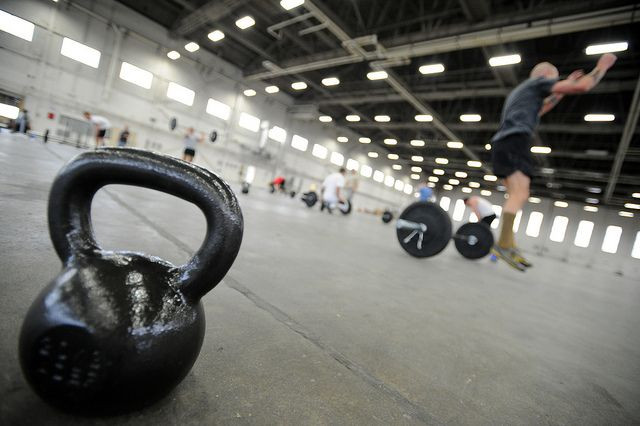Short, High-Intensity Exercise More Beneficial For Type 2 Diabetes Patients Than Low-Intensity, Research Shows

If you polled a group of your friends about what the most effective form of cardiovascular exercise was, chances are many of them would say going for a long, arduous run. A few might also mention high-intensity interval training (HIIT) — a type of exercise characterized by short, varying bursts of movement over a small period of time with no rest. Some types of HIIT can be done in as little as seven minutes, and have been found to burn fat, improve blood pressure, and protect your heart. New research has now found an added benefit to HIIT: It might be better for people with type 2 diabetes than traditional cardio exercise.
According to research presented at the American Heart Association's Scientific Sessions 2015, HIIT improved cholesterol, blood sugar, and weight in patients with type 2 diabetes when compared to a 30-minute regimen of sustained, low-intensity exercise. After three months of HIIT, researchers found a 0.82 percent average decrease in three-month blood sugar patterns when compared to just a 0.25 percent average decrease in those who did the lower-intensity exercises.
Lead author Avinash Pandey, an undergraduate student at the University of Western Ontario in London, Ontario, Canada, said diabetes management programs have traditionally focused on long, low-intensity exercise as a way to combat the disease, but this research might change the way it’s treated (though it might not be for everyone).
"[M]ore may be accomplished with short bursts of vigorous exercise, in which patients achieve a higher maximum target heart rate, and may be easier to fit into busy schedules," Pandey said in a press release. "We also found that these 10-minute intervals may be easier to fit into busy schedules, since people randomized to that regimen were more consistent with exercise and ended up doing more exercise per week."
The study involved 70 participants with type 2 diabetes — most were male with the average age of 67. They were put into two groups: One group exercised 30 minutes a day for five days a week with low-intensity training, while the second group (the high-intensity group) exercised for 10 minutes three times a day, five days a week.
Because the HIIT group exercised more, it experienced a threefold reduction in body mass index, as well as 2.3 times greater improvement in HbA1c — a measure of average blood sugar levels. People in this group also showed better cholesterol levels and stronger cardiac fitness, according to stress tests.
"We are hoping to continue looking at burst exercise and sustained exercise in larger and more diverse patient populations," Pandey said. "With further study, burst exercise may become a viable alternative to the current standard of care of low-intensity, sustained exercise for diabetes rehabilitation."
Source: Pandey A. American Heart Association's Scientific Sessions. 2015.



























